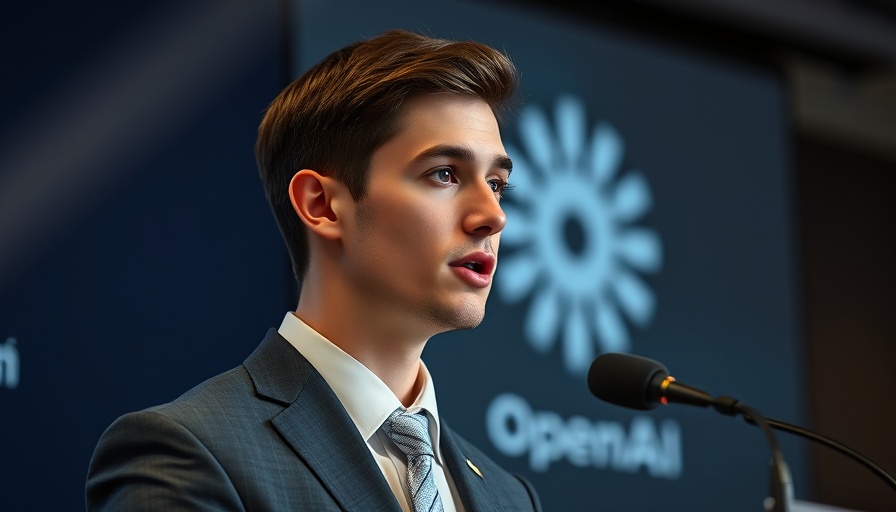
The Shift in Leadership at OpenAI: A New Era
OpenAI has made a significant move by expanding the role of its Chief Operating Officer (COO), Brad Lightcap, to oversee day-to-day operations. This transition not only signifies a strategic shift within the company but is also a response to the rapidly evolving landscape of artificial intelligence (AI). Lightcap, who became part of OpenAI in 2018, is known for his close relationship with CEO Sam Altman, having previously collaborated with him at Y Combinator. Together, they are now poised to lead OpenAI into a future filled with both opportunities and challenges.
Brad Lightcap: Background and Vision
Lightcap’s journey at OpenAI has been pivotal. Before ascending to the role of COO, he served as the chief financial officer and has been instrumental in shaping the organization’s financial strategies. His proactive approach and foresight regarding AI technology make him a fitting choice for this expanded position. In past discussions, Lightcap has expressed optimism about the future capabilities of AI, particularly in how large language models will soon handle more complex tasks efficiently. His belief that “the systems we use today will be laughably bad” in a year's time reflects a confident outlook on technological advancement.
OpenAI's Global Ambitions
One of Lightcap's key responsibilities will be to oversee OpenAI’s global deployment, including fostering partnerships and expanding infrastructure. OpenAI plans to open several new offices worldwide, including in New York, Seattle, Paris, Brussels, and Singapore. This expansion indicates a strong commitment to becoming a significant player in the global AI arena, ensuring that researchers and developers are well-positioned in critical markets.
Leadership Changes Amidst Industry Growth
Lightcap's promotion to oversee day-to-day operations coincides with other critical leadership changes at OpenAI. Mark Chen is taking on additional responsibilities in research, while Julia Villagra has been appointed as the new chief people officer. These changes follow a tumultuous period of leadership shake-ups, including the departures of former CTO Mira Murati and chief scientist Ilya Sutskever, raising questions about the company’s stability and direction. Such changes often bring fresh perspectives and new strategies, which could enhance OpenAI's adaptability in a competitive sector.
OpenAI's Stake in AI Ventures
OpenAI's recent announcements come alongside the launch of a $500 billion AI joint venture called Stargate, in partnership with SoftBank, Oracle, and other investors. This ambitious project aims to bolster AI infrastructure in the U.S. over the next four years, with significant implications for the industry. The backing from such influential tech giants suggests that OpenAI is not just responding to the present landscape but actively shaping the future of AI.
Flat Structure Philosophy: Empowering Innovation
Both Lightcap and Altman advocate for a flat leadership structure where innovative ideas can emerge from all team members. Lightcap’s perspective is that “the really really good ideas come from unexpected places,” resonating with a culture of inclusivity and collaboration. This flat structure could foster greater creativity, encouraging team members at all levels to contribute to strategic decisions and push the boundaries of what's possible in AI.
Looking Ahead: Potential Impact of Leadership Shifts
The recent leadership changes, led by Lightcap’s expanded role, indicate a responsive shift towards OpenAI's long-term vision in the AI landscape. As the company braces for forthcoming advancements and challenges, the focus on global outreach and operational effectiveness becomes crucial. Observers will be keen to see how these changes manifest in OpenAI's projects and initiatives moving forward.
Conclusion: The Human Element in Technological Evolution
As OpenAI transitions into this new leadership dynamic, the impact of these strategic decisions will undoubtedly shape the development of artificial intelligence technology. As potential researchers, users, or stakeholders, staying informed about such changes can help in understanding how AI might evolve in a collaborative and innovative environment.
With the potential for technological advancements at OpenAI and beyond, it’s an exciting time to engage with and reflect on how these developments might affect our lives and industries in the near future.
 Add Row
Add Row  Add
Add 




 Add Row
Add Row  Add
Add 

Write A Comment